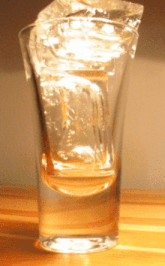

علم الكيمياء

تاريخ الكيمياء والعلماء المشاهير

التحاضير والتجارب الكيميائية

المخاطر والوقاية في الكيمياء

اخرى

مقالات متنوعة في علم الكيمياء

كيمياء عامة


الكيمياء التحليلية

مواضيع عامة في الكيمياء التحليلية

التحليل النوعي والكمي

التحليل الآلي (الطيفي)

طرق الفصل والتنقية


الكيمياء الحياتية

مواضيع عامة في الكيمياء الحياتية

الكاربوهيدرات

الاحماض الامينية والبروتينات

الانزيمات

الدهون

الاحماض النووية

الفيتامينات والمرافقات الانزيمية

الهرمونات


الكيمياء العضوية

مواضيع عامة في الكيمياء العضوية

الهايدروكاربونات

المركبات الوسطية وميكانيكيات التفاعلات العضوية

التشخيص العضوي

تجارب وتفاعلات في الكيمياء العضوية


الكيمياء الفيزيائية

مواضيع عامة في الكيمياء الفيزيائية

الكيمياء الحرارية

حركية التفاعلات الكيميائية

الكيمياء الكهربائية


الكيمياء اللاعضوية

مواضيع عامة في الكيمياء اللاعضوية

الجدول الدوري وخواص العناصر

نظريات التآصر الكيميائي

كيمياء العناصر الانتقالية ومركباتها المعقدة


مواضيع اخرى في الكيمياء

كيمياء النانو

الكيمياء السريرية

الكيمياء الطبية والدوائية

كيمياء الاغذية والنواتج الطبيعية

الكيمياء الجنائية


الكيمياء الصناعية

البترو كيمياويات

الكيمياء الخضراء

كيمياء البيئة

كيمياء البوليمرات

مواضيع عامة في الكيمياء الصناعية

الكيمياء الاشعاعية والنووية
Physical Property and Change
المؤلف:
........
المصدر:
LibreTexts Project
الجزء والصفحة:
............
19-2-2019
1985
Physical Property and Change
Physical changes are changes in which no chemical bonds are broken or formed. This means that the same types of compounds or elements that were there at the beginning of the change are there at the end of the change. Because the ending materials are the same as the beginning materials, the properties (such as color, boiling point, etc) will also be the same. Physical changes involve moving molecules around, but not changing them. Some types of physical changes include:
- Changes of state (changes from a solid to a liquid or a gas and vice versa)
- Separation of a mixture
- Physical deformation (cutting, denting, stretching)
- Making solutions (special kinds of mixtures) .
As an ice cube melts, its shape changes as it acquires the ability to flow. However, its composition does not change. Melting is an example of a physical change (Figure 1.1), since some properties of the material change, but the identity of the matter does not. Physical changes can further be classified as reversible or irreversible. The melted ice cube may be refrozen, so melting is a reversible physical change. Physical changes that involve a change of state are all reversible. Other changes of state include vaporization (liquid to gas), freezing (liquid to solid), and condensation (gas to liquid). Dissolving is also a reversible physical change. When salt is dissolved into water, the salt is said to have entered the aqueous state. The salt may be regained by boiling off the water, leaving the salt behind.
Figure 1.1
: Ice Melting is a physical change. When solid water (H2O) as ice melts into a liquid (water), it appears changed. However, this change is only physical as the the composition of the constituent molecules is the same: 11.19% hydrogen and 88.81% oxygen by mass.
 الاكثر قراءة في مقالات متنوعة في علم الكيمياء
الاكثر قراءة في مقالات متنوعة في علم الكيمياء
 اخر الاخبار
اخر الاخبار
اخبار العتبة العباسية المقدسة

الآخبار الصحية
















 قسم الشؤون الفكرية يصدر كتاباً يوثق تاريخ السدانة في العتبة العباسية المقدسة
قسم الشؤون الفكرية يصدر كتاباً يوثق تاريخ السدانة في العتبة العباسية المقدسة "المهمة".. إصدار قصصي يوثّق القصص الفائزة في مسابقة فتوى الدفاع المقدسة للقصة القصيرة
"المهمة".. إصدار قصصي يوثّق القصص الفائزة في مسابقة فتوى الدفاع المقدسة للقصة القصيرة (نوافذ).. إصدار أدبي يوثق القصص الفائزة في مسابقة الإمام العسكري (عليه السلام)
(نوافذ).. إصدار أدبي يوثق القصص الفائزة في مسابقة الإمام العسكري (عليه السلام)


















